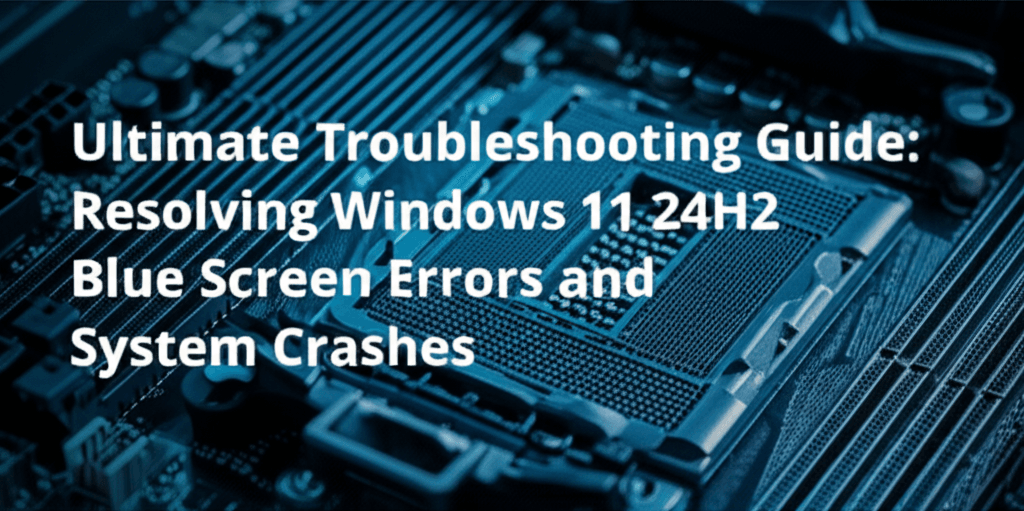If you’re encountering frequent Blue Screen of Death (BSOD) errors or unexpected system crashes after installing Windows 11 24H2, you’re not alone. These stability issues can disrupt productivity and cause significant frustration. This comprehensive troubleshooting guide provides proven methods to diagnose, resolve, and prevent Windows 11 24H2 system crashes using both built-in tools and advanced recovery techniques.
Understanding Windows 11 24H2 Stability Issues
The 24H2 update introduced several architectural improvements to Windows 11, but some users report compatibility challenges with drivers, hardware components, and certain security features. Common BSOD error codes include:
- IRQL_NOT_LESS_OR_EQUAL (0x0000000A)
- SYSTEM_SERVICE_EXCEPTION (0x0000003B)
- PAGE_FAULT_IN_NONPAGED_AREA (0x00000050)
- CRITICAL_PROCESS_DIED (0x000000EF)
Step-by-Step Fixes for BSOD and Crashes
1. Update Critical System Components
Begin with these essential updates:
- Windows Update: Navigate to Settings > Windows Update > Check for updates
- Chipset Drivers: Visit your motherboard manufacturer’s support page
- Graphics Drivers: Download directly from NVIDIA, AMD, or Intel
- Firmware Updates: Check for UEFI/BIOS updates for enhanced compatibility
2. System Diagnosis and Repair
Use Windows’ built-in diagnostic tools:
- System File Checker: Run
sfc /scannowin Command Prompt (Admin) - DISM Tool: Use
DISM /Online /Cleanup-Image /RestoreHealth - Memory Diagnostic: Search for “Windows Memory Diagnostic” and reboot
- Reliability Monitor: Review crash reports via Control Panel > Security and Maintenance
3. Hardware and Configuration Troubleshooting
- Disable Overclocking: Restore default CPU/GPU clock speeds
- Clean Boot State: Use
msconfigto disable startup items and non-Microsoft services - Check Storage Health: Run manufacturer diagnostics for SSDs/HDDs
- Reseat Hardware: Ensure RAM sticks and expansion cards are properly seated
4. Advanced Recovery Options
For persistent crashes:
- Uninstall recent updates via Settings > Windows Update > Update History
- Use System Restore to revert to a stable configuration point
- Perform an In-Place Upgrade via Windows 11 Installation Media
- Clean install Windows 11 24H2 as a last resort
5. Preventative Measures and Best Practices
- Create regular system restore points
- Maintain updated system backups
- Install critical drivers through Windows Update or manufacturer sources only
- Monitor system temperatures using utilities like HWMonitor
Conclusion
Most Windows 11 24H2 BSOD errors stem from driver incompatibilities, problematic updates, or hardware issues. By methodically applying these solutions – beginning with driver updates and progressing through system repairs to hardware diagnostics – users can typically resolve stability issues without requiring professional assistance. For mission-critical systems, consider delaying major updates until initial compatibility issues are resolved through Microsoft’s cumulative updates.

Leave a Reply